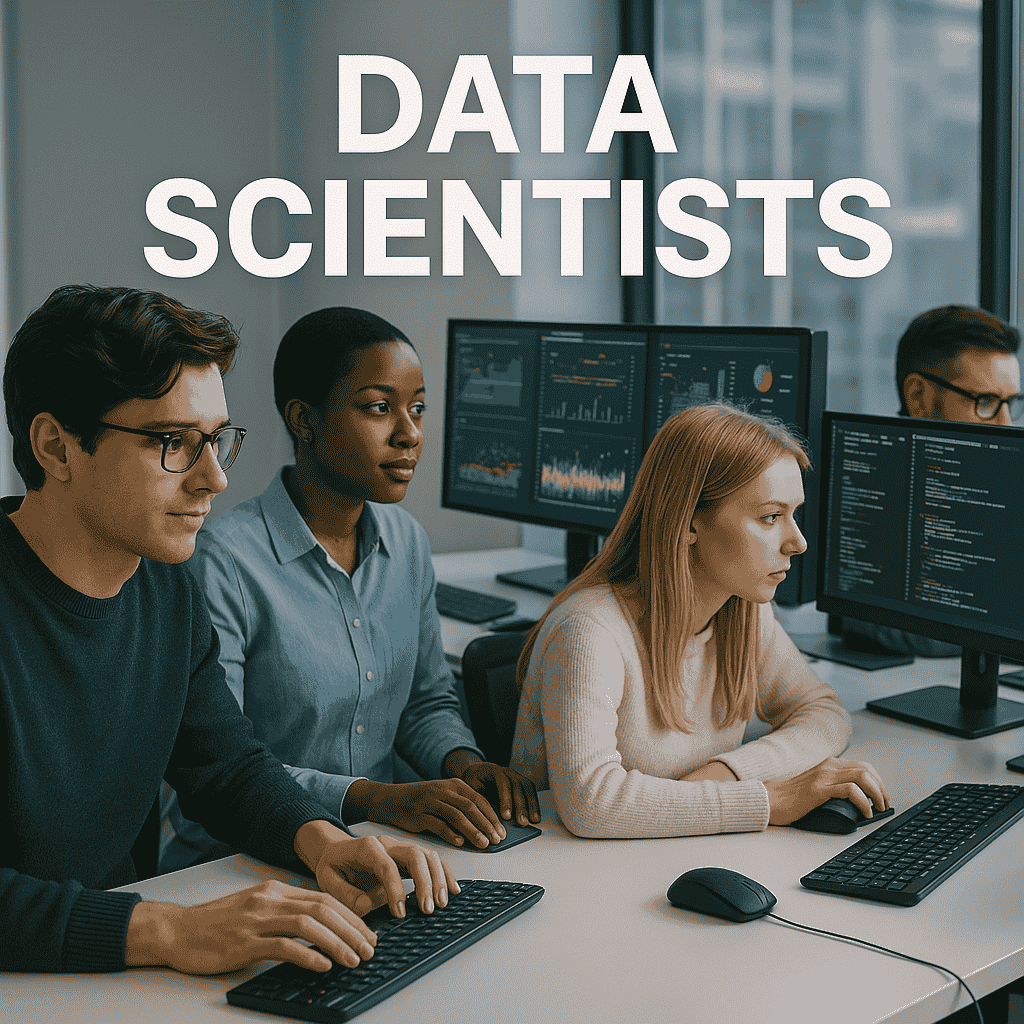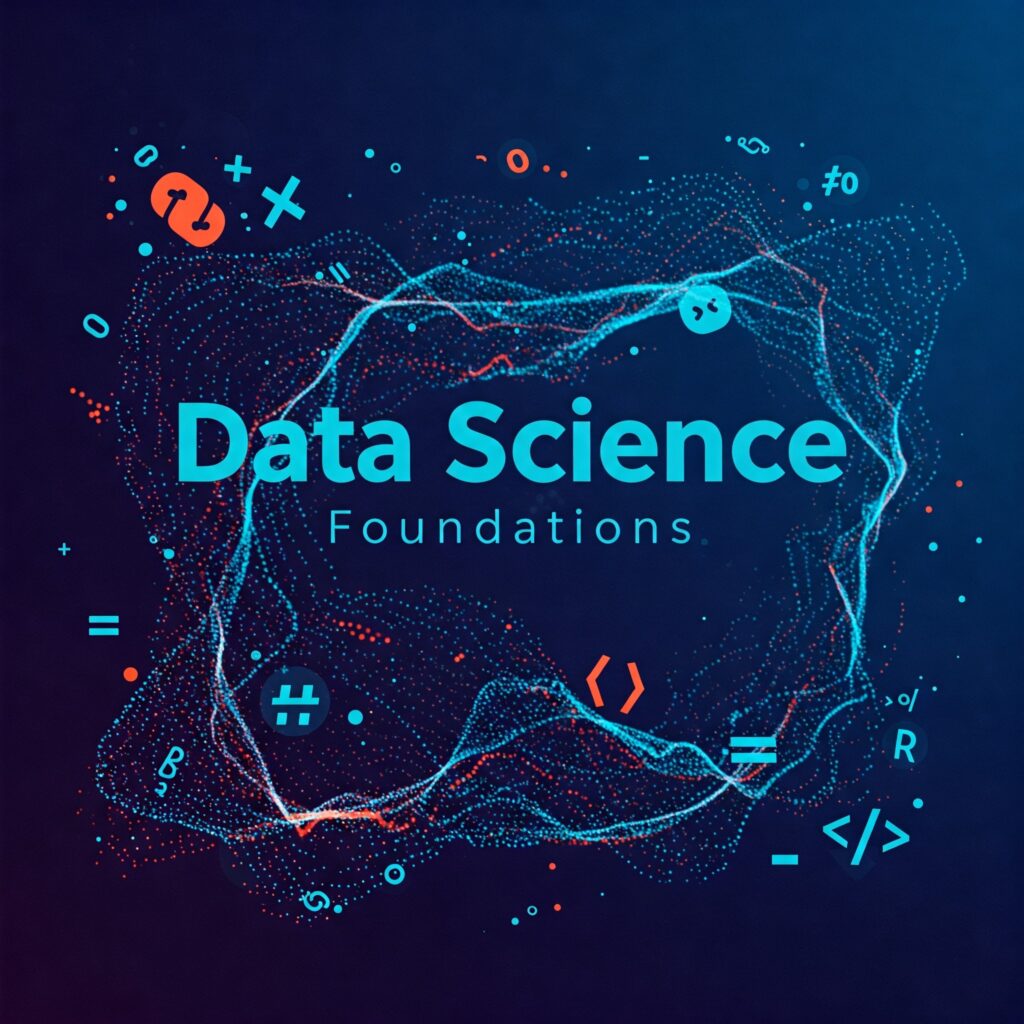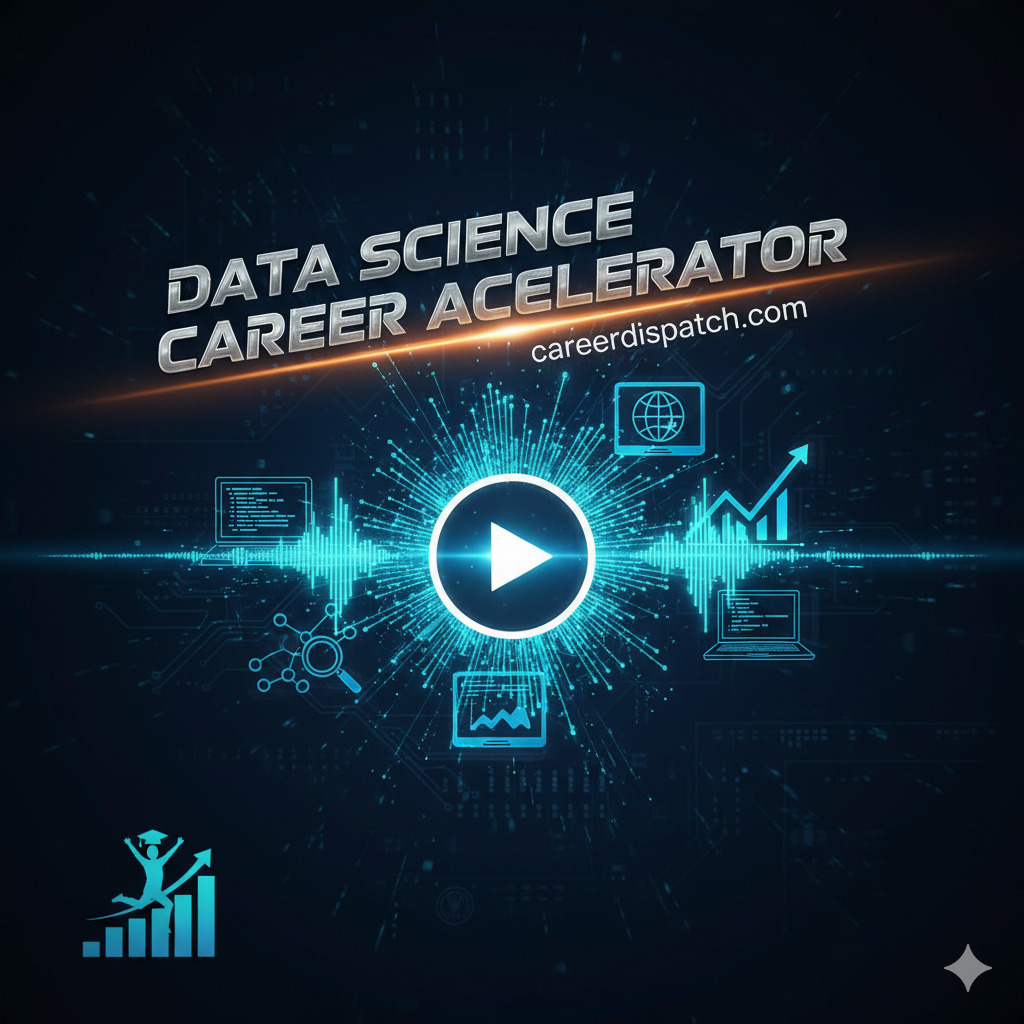Fast-track your career journey and skip the college
Data Science Career Accelerator
Launch a high-paying career in data science with this project-driven program. Master Python, machine learning, deep learning, and big data tools while building a portfolio of real-world projects. Earn certifications from **IBM, Google, and TensorFlow, and secure internships with industry partners like Kaggle and DrivenData
Free
Foundations for Data Science (Prerequisite Track1)
4 Weeks | **Format: 3 Modules, 12 Lessons, 8 Quizzes, 6 Labs
Free Certgification
– freeCodeCamp Scientific Computing with Python Certification (Optional)
– Khan Academy Statistics & Probability Course Certificate
🎓 Data Science Career Accelerator – Full Curriculum

Advanced Data Science & AI Applications (Track2)
6 Modules, 30 Lessons, 20 Quizzes, 15 Hands-On Labs, 2 Internships
Free Certifications
– IBM Data Science Professional Certificate
– Google Data Analytics Certificate
– TensorFlow Developer Certificate
Explore courses covered in this career tracks’
Note: You have to complete the Foundations For Data Science before you can enroll in the Advanced Data Science course. It’s a prerequisite.

Foundations for Data Science (Prerequisite Track1)
Learn Python syntax, problem-solving, and statistical analysis while working with real-world datasets.

Advanced Data Science & AI Applications (Track2)
Launch a high-paying career in data science with this project-driven program. Master Python, machine learning, deep learning, and big data tools while building a portfolio of real-world projects
✅ Program Overview
🔥 Key Features:
✔ Hands-on, project-based learning for building career-ready skills
✔ Free certifications after completing each track
✔ Free internships for practical AI & data science experience
✔ Portfolio development – Showcase projects professionally
✔ Mock interviews & technical prep for data science hiring rounds
✔ Industry-relevant tools (Python, Pandas, TensorFlow, Docker, Kubernetes)
✔ Cloud deployment training (AWS, Azure, GCP)
📘 Track 1 – Foundations for Data Science (Prerequisite Track)
Objective: Build essential programming, math, and data literacy skills before advancing into AI systems.
📘 Track 2 – Advanced Data Science & AI Applications
Objective: Transition from foundational knowledge to building and deploying AI systems.
Track 1 – Foundations for Data Science (Prerequisite Track) Course Structure:
🔹 Chapter 1 – Python for Data Science
✅ Key Concepts: Python syntax, loops, functions, and data structures
✅ Hands-On Project: Build a basic data manipulation pipeline using Pandas
🔹 Chapter 2 – Math & Statistics for Data Science
✅ Key Concepts: Mean, variance, probability distributions, hypothesis testing
✅ Hands-On Project: Implement statistical analysis on real-world datasets
🔹 Chapter 3 – Data Wrangling & Preprocessing
✅ Key Concepts: Pandas for data manipulation, feature engineering, missing values
✅ Hands-On Project: Clean and preprocess financial transaction datasets
🔹 Chapter 4 – Exploratory Data Analysis (EDA)
✅ Key Concepts: Data visualization, correlation analysis, anomaly detection
✅ Hands-On Project: Perform EDA on a customer behavior dataset
🎓 Track 1 Completion Benefits:
✅ Free Certification: IBM Data Science Professional Certificate
✅ Free Internship Opportunity: IBM Data Analyst Internship
✅ Portfolio Formatting Guide: Structuring Jupyter Notebooks & reports
✅ Mock Interview Prep: Python & Data Science Fundamentals
🔹Track 1 – Foundations for Data Science, listing each chapter with its respective lessons and a brief description to ensure clarity and easy navigation. 🚀
Track 1 provides essential programming, math, statistics, and data wrangling skills, ensuring learners build a strong foundation before diving into advanced AI applications in Track 2.
Track 2 – Advanced Data Science & AI Applications Course Structure:
🔷 Chapter 1 – Advanced Machine Learning
✔ Lesson 1.1 – Supervised Learning: Classification & Regression
✔ Lesson 1.2 – Unsupervised Learning: Clustering & Dimensionality Reduction
✔ Lesson 1.3 – Ensemble Learning & Model Optimization
💡 Hands-On Project: Building AI-Powered Predictive Models
🔹 Chapter 2 – Deep Learning & Neural Networks
✔ Lesson 2.1 – Neural Networks & Backpropagation
✔ Lesson 2.2 – Convolutional Neural Networks (CNNs) for Image Processing
✔ Lesson 2.3 – Recurrent Neural Networks (RNNs) & LSTMs for Time-Series
💡 Hands-On Project: Developing AI Models for Image & Text Processing
🔷 Chapter 3 – Natural Language Processing (NLP)
✔ Lesson 3.1 – Text Preprocessing & Tokenization
✔ Lesson 3.2 – Word Embeddings & Transformers
✔ Lesson 3.3 – Sentiment Analysis & Chatbot Development
💡 Hands-On Project: Building AI-Powered NLP Applications
🔷 Chapter 4 – Time-Series Forecasting & AI for Finance
✔ Lesson 4.1 – Time-Series Analysis & Feature Engineering
✔ Lesson 4.2 – ARIMA, LSTMs & Transformer-Based Forecasting
✔ Lesson 4.3 – AI for Financial Risk Prediction & Fraud Detection
💡 Hands-On Project: Developing AI Models for Financial Forecasting
🔷 Chapter 5 – Scalable AI Deployment & MLOps
✔ Lesson 5.1 – Cloud-Based AI Deployment (AWS, GCP, Azure)
✔ Lesson 5.2 – Model Explainability & Interpretability (SHAP, LIME)
✔ Lesson 5.3 – MLOps for Scalable AI Systems
💡 Hands-On Project: Deploying AI Models for Real-World Applications
🎯 Final Review – Are We Missing Anything?
✔ This track covers all core skills needed for advanced AI applications!
🚀 Things to check before moving forward:
🔹 Are all coding projects fully implemented with clear documentation?
🔹 Have we integrated cloud-based AI deployment for scalability?
🔹 Do we need additional reinforcement learning before deep learning?
🔹 Should we add more case studies for applied AI in healthcare & finance?
🎓 Track 2 Completion Benefits:
✅ Free Internship Opportunity: AI Research Internship at NVIDIA
✅ Portfolio Formatting Guide: GitHub repository structure, README writing
✅ Mock Interview Prep: SQL, machine learning theory, cloud deployment
🎓 Capstone Project:
✅ Build & deploy a real-time AI-powered recommendation system (Personalized product recommendations, fraud detection alerts, customer churn analysis)
🏆 Portfolio Formatting Guidelines
🔹 1. GitHub Repository Structure
✅ Organize project files clearly
✅ Include README with project overview & setup instructions
✅ Use Jupyter Notebook for step-by-step explanation
🔹 2. Project Documentation Best Practices
✅ Add data preprocessing steps & feature engineering insights
✅ Explain model selection & hyperparameter tuning
✅ Include performance evaluation charts & metrics
🔹 3. Building a Personal Portfolio Website
✅ Use GitHub Pages, Medium, or WordPress
✅ Feature key capstone projects with interactive demos
🎯 Technical Interview Prep & Sample Questions
✅ Data Science Fundamentals
- How would you handle missing data in a dataset?
- What is the difference between mean imputation and median imputation?
- How do you evaluate a machine learning model’s performance?
- Explain the bias-variance tradeoff in simple terms.
- What are the key differences between classification and regression models?
✅ Machine Learning & AI Questions
- How does gradient descent work in optimizing models?
- Explain the working of CNNs vs. RNNs for different AI tasks.
- How would you deploy an AI model in production using Docker or Kubernetes?
✅ SQL & Data Engineering Questions
- Write an SQL query to find customers with high transaction volume.
- How do you optimize a large-scale database for efficient queries?
- What is indexing in SQL, and why is it useful?
🎯 Technical Interview Prep & Sample Questions
✅ Data Science Fundamentals
- What is the difference between mean imputation and median imputation?
- How do you evaluate a machine learning model’s performance?
- Explain the bias-variance tradeoff in simple terms.
- What are the key differences between classification and regression models?
✅ Cloud & MLOps Questions
- What are the benefits of serverless AI deployments?
- How does autoscaling in Kubernetes improve AI model performance?
- Explain the role of drift detection and continuous monitoring in AI systems.
✅ Mock Interviews Available – Participate in live coding challenges & behavioral interview simulations
🎓 Certifications, Internships & Industry Support
✅ Free Certifications:
Earn industry-recognized certifications after each track completion.
- IBM Data Science Professional Certificate
- Google Cloud Machine Learning Engineer
- Microsoft AI Fundamentals
🎯 Technical Interview Prep & Sample Questions
✅ Free Internships & Real-World Projects:
Access paid & free internships through career partnerships.
- AI Research Internships at IBM, NVIDIA, OpenAI
- Data Analyst roles at startups & fintech companies
- Open-source contribution opportunities
✅ Program Overview
🔥 Key Features:
✔ Hands-on, project-based learning for building career-ready skills
✔ Free certifications after completing each track
✔ Free internships for practical AI & data science experience
✔ Portfolio development – Showcase projects professionally
✔ Mock interviews & technical prep for data science hiring rounds
✔ Industry-relevant tools (Python, Pandas, TensorFlow, Docker, Kubernetes)
✔ Cloud deployment training (AWS, Azure, GCP)
✅ Community Support & Networking:
Join a global community of AI & Data Science learners.
- Peer mentorship & career guidance
- Project collaboration & hackathons
- Resume & portfolio workshops
🎓 Next Steps & Enrollment
1️⃣ Option 1: Convert via Pandoc
pandoc data-science-accelerator.md -o data-science-accelerator.pdf
💡 Final Reflection Prompt
This fully integrates job-readiness, portfolio-building, and technical interview prep! 🚀📊
📥 How to Convert This Markdown to PDF
2️⃣ Option 2: Use Online Markdown-to-PDF Converters (Dillinger, MarkText)
3️⃣ Option 3: WordPress Markdown PDF Plugin – Upload directly without formatting loss
🎓 Next Steps & Enrollment
✅ Enrollment Page: CareerDispatch AI Learning Portal
✅ Live Support: Join the AI Developer Discord Server for peer collaboration
✅ Industry Opportunities: Access internships, freelancing projects, and AI job openings

